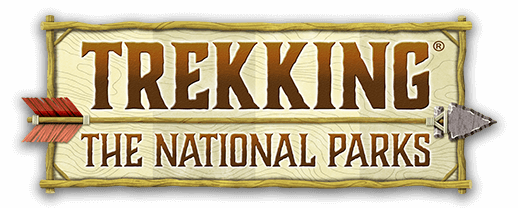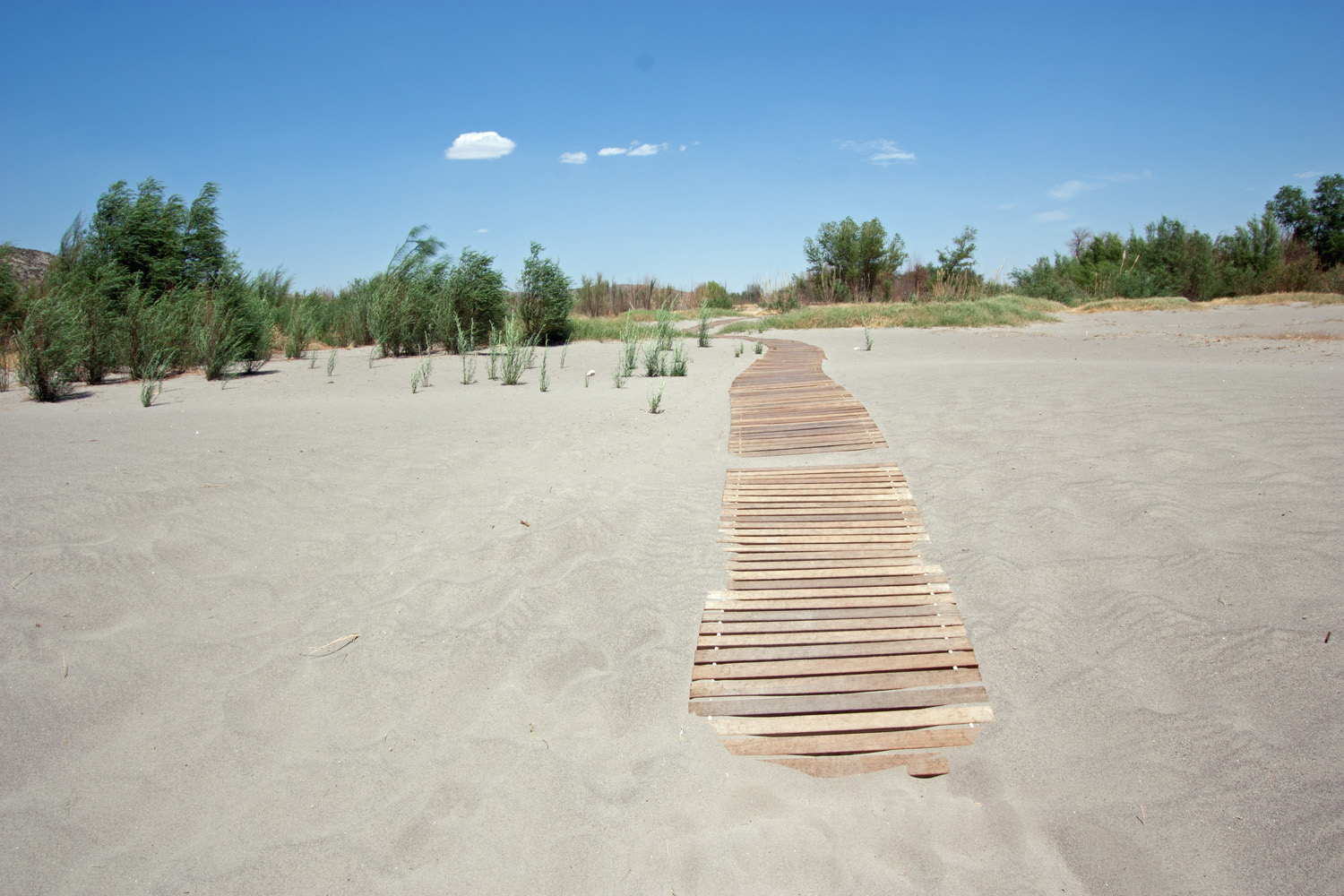Big Bend National Park
Located: Texas - Established: June 12, 1944
The Park: “Big Bend” refers to the U-shape the Rio Grande Wild and Scenic River takes on as it “bends” around the western spur of Texas. For 118 miles, the river separates Big Bend NP from our Mexican neighbor. Big Bend is a land of high contrasts. Stretching from the sun-scorched terrain of a desolate desert floor to its cool wooded mountain peaks, this park is like no other!
Big Bend is famous for its geological characteristics and the diversity of its plant and wildlife. This park has more types of plants, birds, bats, butterflies and cactus than any other national park in America! In addition, the park’s fossil finds have included the skull of a Chasmosaurus– the largest known skull of a land animal - and the bones of a pterosaur – the second largest known flying creature with a wing span of 36 feet!
Terry trekking to the Santa Elena Canyon Trail along the Rio Grande...park visit #22.
Getting there: At the southernmost tip of Highway 385, you will have arrived in the weather-beaten desert that makes up the majority of Big Bend National Park. Early visitors to this region found it so desolate; they named it El Despoblado – the uninhabited land!
When to visit: The park is open year round; however, the during the summer months, temperatures at the lower elevations can exceed 110°! Typically, the Chisos Mountain region will be 20° cooler than the lowlands. Winters are mild and the deciduous trees provide a splash of fall color during autumn.
What to do: Floating the Rio Grande will give you an incredible view of the park’s steep canyons and a feel for the abundant wildlife that thrive in and along its shoreline. Sliding off the raft into the cool waters will also offer you a reprieve from the extreme summer heat!
The Ross Maxwell Scenic Drive will expose you to the geologic splendor of the park and give you a glimpse of how early settlers of this region lived.
Boardwalk along the sandy shores of the Rio Grande
Hiking: To escape the blazing heat of the desert floor during the summer months, hike about the Chisos Mountains. Big Bend offers day hikers or backpackers over 150 miles of trails located in the desert, about the rugged mountains and along the Rio Grande River.
Where to stay: The Chisos Mountain Inn offers a 72-room hotel with hot showers, comfy beds and a “green certified” dining facility! For those who prefer pitching a campsite under the stars, Big Bend offers three options:
The 31-site Cottonwood Campground is located at the southwestern stretches of the park. The 60 campsites located in the Chisos Basin Campground are the park's most sought after due to the higher elevation, cooler temperatures and proximity to many of Big Bend's more desirable hiking trails. The 100-site Rio Brand Village Campground is a favorite of those traveling in RV’s.
Rio Grande River
Memorable moment: Summiting Emory Peak! This 10½-mile round trip trek is rated “strenuous” and during the summer months I would fully agree! Be prepared and pack plenty of water! Oh, but what a view from atop the peak! The last 25 feet requires a scramble up the granite boulders. No bueno for those with a fear of heights!
Trivia: The fossilized remains of the second largest flying animal ever found on earth (pterosaur Quetzalcoatlus northrope) was found in Big Bend in 1971. This prehistoric creature had a wingspan of 36 feet!
Banner: Yellow flowers of the Prickly Pear Cactus.
Experience these Check List:
- Stop by the Panther Junction Visitor Center or any of the park's other 4 centers
- Take Ross Maxwell Scenic Drive
- Hike to the top of Emory Peak
- Hike Santa Elena Canyon Trail along the Rio Grande
- Picnic at Cottonwood Campground
Chisos Mountains





